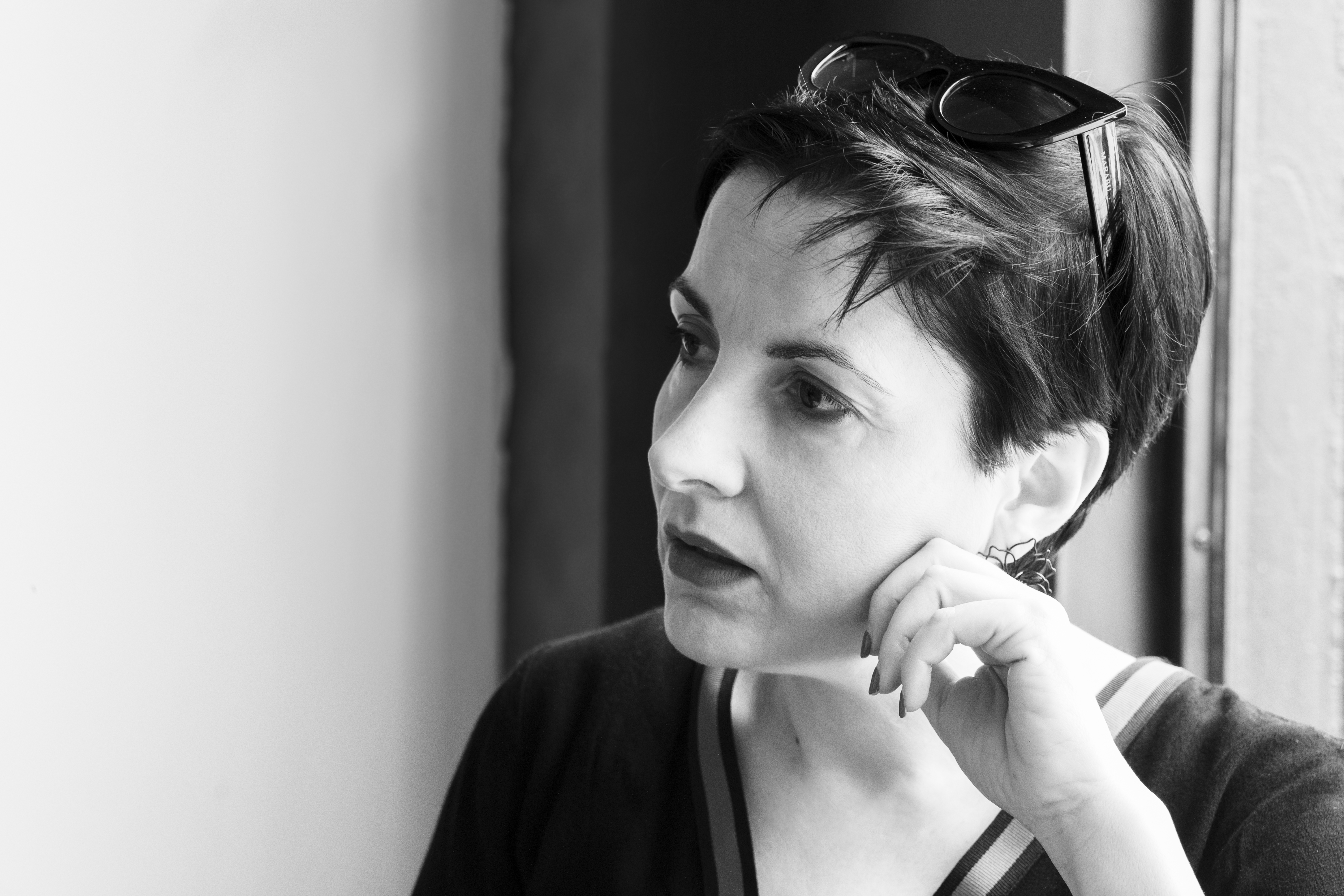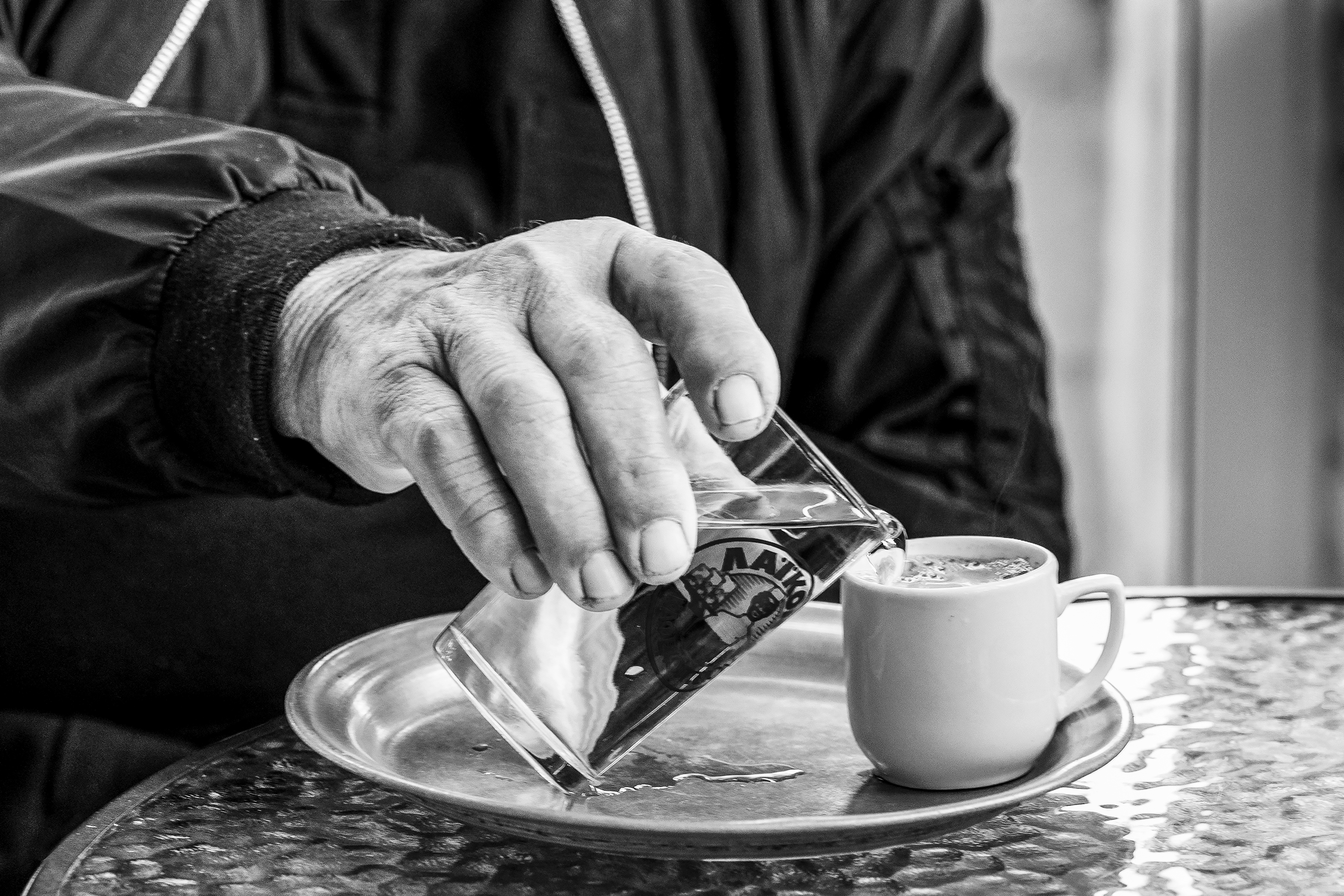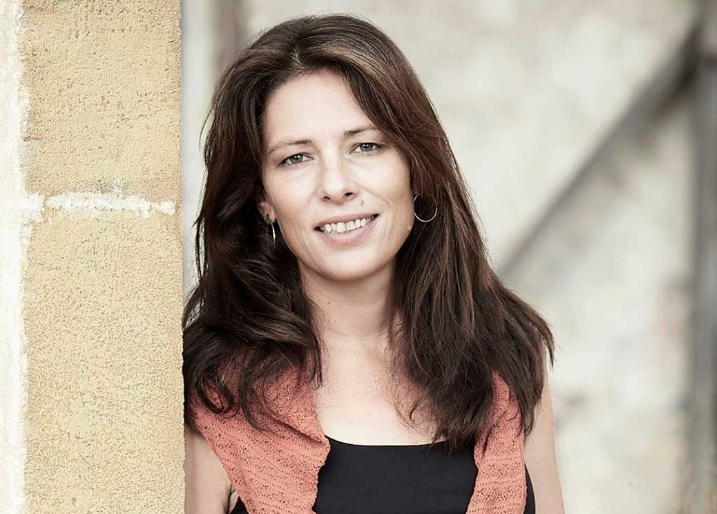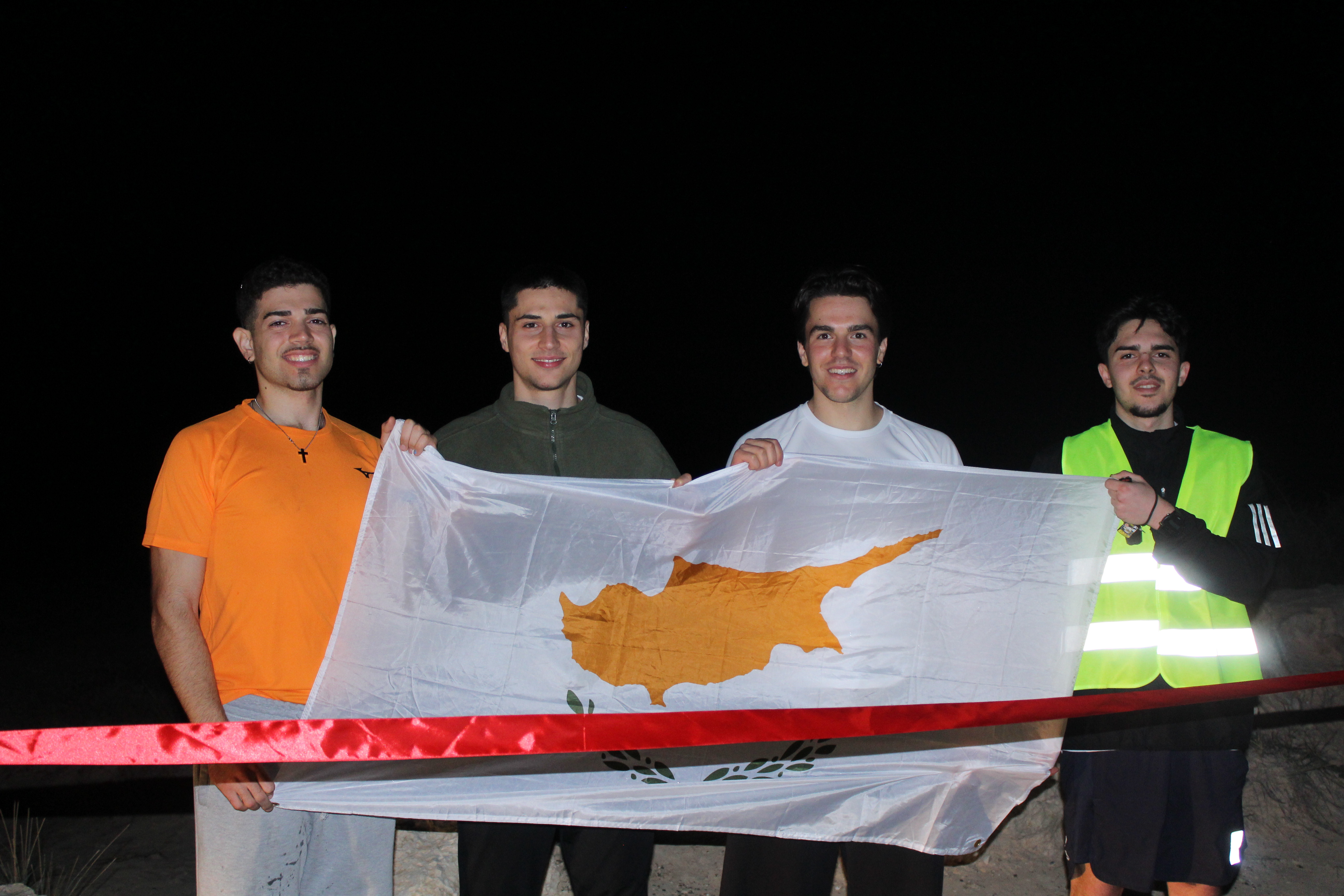How much pleasure can be found in a cup of coffee? How much history does it carry in its froth and how much ideology drips from its dregs?
There is more to a cup of Cyprus coffee than its strong, bitter taste. In a new book on the matter, Aspasia Papadima unfolds the secrets of the island’s national drink, looking at its roots, studying its culture and deciphering the meanings in the way it is consumed.
The book, she says, was born out of her understanding of “the breadth and richness of the field; I had so much to understand and say about the culture of Cypriot coffee and the traditional coffee shop”.
Traditional coffee shops stuffed with elderly men playing backgammon are like many other ingrained parts of the island’s culture under threat. “I felt the need to study and record the phenomenon of the traditional Cypriot male-dominated coffee shop at a crucial moment before its final disappearance or its mutation into something new, something different.”
Coffee became the medium through which Papadima, an associate professor at Cyprus University of Technology (Tepak), immersed herself into Cypriot culture, studying the miniature of Cypriot society, its beliefs and morals, as reflected in the traditional Cypriot coffee shop.
Working with male photographers, she set out to document a single sex environment. “I purposefully chose male collaborators because as a woman and as a mainland Greek native, I wouldn’t have been able to integrate into the coffee shop environment nor approach/discuss with authenticity and without inhibitions or distance with regular coffee shop goers.”
For first phase of the study, Sophocles Karpasitis took photographs that represented the coffee shop culture with a clear, realistic look. But for “the needs of the book, Nicholas Constantinou became my ears and eyes inside the coffee shops for almost two years. He brought me photographs, stories, narratives and discussions, and visualised moments from the coffee shops he visited. Together we studied the photographic material from which I gained knowledge and inspiration and which gave me new guidance for my next photographic expedition”.

His visual recording captures the contradictory dominance of the traditional coffee shop in modern society with realism, respect and restrained emotion: “the stillness within the fast pace of the city; the leisureliness, planted in the bustling urban landscape; the sincere enjoyment of a minimal, everyday, cheap luxury; frugality as an antidote to modern consumer excess; the established stereotypical ideology within modern society; the oriental echo in the modern, European environment.
“His photographs visualise and clothe the content of the individual themes of the book and describe with courage and directness a pivotal moment in Cypriot reality that seems to be gradually fading, that’s being lost.”
But the work for the book went beyond these photographs; Papadima held conversations with coffee shop goers and focus groups involving individuals of both sexes from different age groups asking about morals, cultural perspective, why and how, stereotypical perceptions and the gender dimension. She also referred to existing international writing, the archives of the Cyprus press from the Press and Information Office, the Bar Association and the archives of individual coffee shops and through interviews, and the memoirs of foreign tourists visiting in the past, “anthologies and everything by Cypriot poets who have recorded the coffeehouse culture in a unique way.”
Her interest in the traditional coffee shop also stems from her interest in studying issues related to gender in popular culture (pop culture) including advertising, commercial signs and gendered approaches to the arts, etc.
“I study the gender dimension in the traditional male-dominated coffee shop as a manifestation of patriarchy in the historical, social, political and cultural context of Cypriot reality. I analyse the dominance and performance of gender through the customs, practices, decoration (the neglect and indifference to the aesthetics and hygiene of the space) and the typography on the sign (banner) of the traditional coffee shop,” explains Papadima.

Coffee shop signs, she says, tend to be strictly functional and aesthetically neutral, a style that indicates strength, seriousness or indifference to design trends. “The austerity of the sign reflects the austere space of the male-dominated coffee shop where any attempt at embellishment would seem inappropriate,” she adds.
Traditional coffee shops display behavioural patterns that have their roots in the distant past and maintain patriarchal ideology and rhetoric, such as language, body language (extended body postures that demonstrate authority, imposition and dominance), masculine behaviour in general and the use of semi-public space for socialisation and entertainment exclusively by men: “The coffee shop is a public space of conviviality that belongs exclusively to men, just as symbolically the free time belongs to him to waste there on himself. All of this continues to happen in modern European Cyprus”.
The method of making coffee employed in the coffee shops she features is what we in Cyprus call Cypriot, while in Greece they call it Greek, in Turkey Turkish, in the Arab world Arabic, in Serbia Serbian, etc. But it first appeared in Yemen and from there spread to Islam between the 10th and 15th centuries AD, she says.
“This happened through the trade routes that united the expanded Ottoman Empire and through the pilgrims heading to Mecca seeing as coffee is recognised by Islam as a stimulating drink that helps with arousal during the endless hours of prayer. Coffee proves to be a good substitute drink for socialising since alcohol is prohibited and is characterised as ‘the wine of Islam’, she adds. “The clarity of mind that coffee causes and the political discussions that are stimulated during its consumption are not always liked by the authorities, so during its history coffee has known many persecutions and prohibitions. Nevertheless, the first coffee houses appeared in Constantinople in the 16th century.”
As a result, the operation of coffee shops is recorded in Cyprus as early as the 17th century complete with the standards and influences of the Ottoman male-dominated coffee shops. “The habits and rituals of coffee were initially adopted by the Greek Orthodox population of the East and were integrated into the wider Greek culture during Ottoman rule in both Greece and Cyprus. Many foreigners who came to Cyprus record the practices and customs of the traditional coffee shops during the 19th century,” says Papadima.
“In the past and especially in the countryside, coffee shops were a multifunctional space with a variety of social interaction and was the centre of social life in villages and cities, especially in villages where infrastructure was limited or non-existent. It served multiple functions; commercial transactions took place and agreements were concluded, marriages were arranged and dowries were determined. They also functioned as post offices, as points for collecting state taxes. Craftsmen and producers sold their products outside coffee shops, while until the establishment of slaughterhouses by the English, livestock farmers slaughtered animals outside them and sold the meat,” reveals Papadima. “They were also an information centre. Information was provided either by the coffee shop radio or by reading the newspaper by the educated coffee shop goers, the priest or the village teacher.”
At the same time, coffee shops also served to entertain, theatrical performances by troupes that toured the province would be presented as would musical performances by travelling musicians with singers and dancers (forbidden to the young audiences), juggling and Karakiozis performances. Popular poets found an audience to recite their poems and sell their pamphlets. “Political meetings, election speeches, etc. were also held there”.
Even though her conversations underline the coffee shop is an outdated institution in the modern European reality of Cyprus, Papadima believes that even though traditional coffee shops are disappearing, they will not vanish all together. “Fortunately, we have made some steps forward on issues of equality (in coffee shops), although not spectacularly. The traditional male-dominated coffee shop, as we knew it in the past, is tending to disappear. We will perhaps encounter it for a while longer in the more isolated parts of the Cypriot countryside where more elderly people live. In urban centres, the coffee shop is mutating. Despite the invasion of powerful and modern coffee chains, more and more traditional coffee shops are appearing, as a nostalgic echo of the coffee shop culture, modernised in terms of their aesthetics and inclusive audience but faithful to their social function, demonstrating the importance of the traditional coffee shop as cultural capital.”
Her book ends with anecdotes about coffee including “While drinking his coffee at a coffee shop, a man feels the urgent need to go to the bathroom. To preserve his coffee until he returns, he leaves a note next to it that says “I spat in it.” Upon returning, he finds another note next to his coffee that says “me too.”
Entitled Coffee and Coffee Shops and published in Greek, her book is available in bookshops in Cyprus and Greece, priced at €12-14







Click here to change your cookie preferences